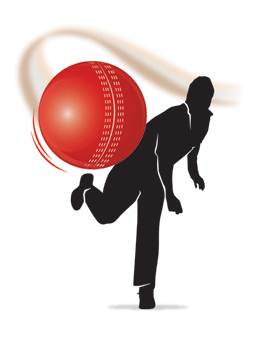How to Run a Cricket Club: Finances
This is part of the How to Run a Cricket Club series on PitchVision Academy
Picture the scene, the first day of the cricket season and you are the new club Treasurer, entrusted with looking after the club's monies.
It's pure chaos. You are handling cash from players who are paying match fees (and chasing the guy who always slips away) while dealing with demands for payment for food and from umpires.
How to Run a Cricket Club: The Complete Guide
Running an amateur cricket team is hard work. You need all the help you can get because it's rare to find anyone getting paid for their long hours.
It might be alright if everyone chipped in, but the truth is, in any side, 10% of the members that do 90% of the work. You might be running an an expensive club middle-class club in leafy Surrey, putting on park cricket in Sydney or running an academy for youngsters in Delhi; it's always the same story.
Quick Tip: The Tennis Ball Advantage?

Dia is a reader with a question,
"I'm 14 years old. Now I play with a tennis ball. Will this be an advantage when I play with cricket balls?"
Firstly, well done to Dia for using the resources he has. A lot of young cricketers don't have the advantage of playing in clubs with expensive equipment. Many people reading this will know that feeling.
Different Practice: How 3 Indian Batsmen Approach Drills
We live in a time where we know that cricket is different for everyone. There used to be a template, but the more we understand about people, the more we realise everyone's approach needs to be individual.
Take 3 Indian batting heroes: Gambhir, Dravid and Kohli.
Each have had success by doing it their own way rather than taking to same approach every time.
You only need to see how they practice to discover the difference. Here are the ways that these batsman look at a net session:
Cricket Show 198: Competition Winner

This week's winner of the Cricket Show podcast question competition is Ragav. He wins a free coaching course from PitchVision Academy.
The winning question was:
"Our club lacks good outfield and has rough grass. As a result of this we are not able to practice important skills like sliding, boundary stopping, diving and throwing ourselves around, as most of us fear getting bruised. So we are just limited to catching and throwing practices for most of the time. Is there any alternative way we can get some practice for these skills? Any Indoor sessions for example just to build up the correct technique?"
Listen to the panels answer to his question here.
To enter your own question for the chance to win your choice of online coaching course send your questions in here.
Exercises to Bowl Faster: Shoulder Health
You can't bowl fast unless you have a healthy shoulder, but bowling is notoriously tough on your shoulders. If you have bowled for a long session you know the feeling of soreness in your bowling shoulder the next day.
To stop that from becoming an injury, you need to do some preventative exercise beyond just heading to the nets and getting a few overs under your belt.
For a lot of bowlers this means doing work with a band on the rotator cuff and some bench pressing.
Cricket Show S4 Episode 5: The Gift of the Wrist
| Attachment | Size |
|---|---|
| PitchVision Academy - PitchVision Academy Cricket Show 198.mp3 | 18.8 MB |

Mark Garaway does the heavy lifting this week about women's cricket, bad outfields and spin bowling pace. David Hinchliffe is back from Sydney and just about keeping up to the pace while Burners gives us some tips on sliding, but not the type you think.
Listen to the show to hear the quality cricket advice.
How to Coach Leg Side Stumpings
 The leg side stumping is a sure fire way to change the momentum of a game.
The leg side stumping is a sure fire way to change the momentum of a game.
It's a pressured delivery from the bowler that then gets a wicket from a ball slung down legside! All of a sudden the feel of the match changes as a result of a swift bit of keeping brilliance.
There are a number of tips that I give keepers to increase their competence down the leg side and then to take that most beautiful dismissal:
Exercises to Bowl Faster: Rows
Nobody knows why, but there is a direct relationship between to strength of your lats and how fast you bowl.
That means, the more weight you can move in an upper body pulling movement will directly relate to greater speeds on the pitch.
It's not often that this crossover is so clear, so you should take advantage and do as much pulling as possible if you want to bowl faster.
The problem is that upper body pulling is one of the hardest movements to train, especially in the horizontal plane.
When to Bowl a Backspinner
 Menno Gazendam is author of Spin Bowling Project. Get your free 8 week spin bowling course here
Menno Gazendam is author of Spin Bowling Project. Get your free 8 week spin bowling course here
When should you bowl your backspinner?
Nothing stops you bowling it at any time, but then you are just bowling without a plan. And good spinners always bowl with a plan.





















